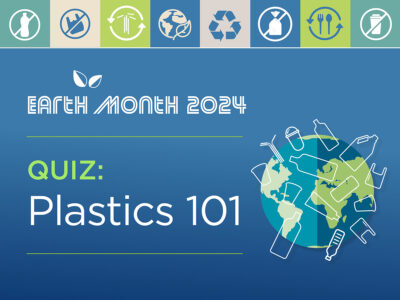
Though history will remember 2020 as the year the COVID-19 pandemic brought the world to a standstill, scientists continued to study the natural world and advance our understanding of it. Several scientific breakthroughs were announced in 2020, including the discovery of new species, the unearthing of surprising archaeological remains, and, of course, the remarkably fast development of a vaccine for the COVID-19 virus. As we welcome in a new year, let’s take a look back at some of the scientific highlights from a difficult year. And be sure to nominate your favorite science news story from 2020 in the comments section.
1. A mammal with a duck-like bill and a tail like a beaver’s, the platypus is such a strange animal that some dismissed early specimens as fakes. What trait did scientists add to the platypus’ list of oddities in 2020?

Dust off your groovy old black light, because it turns out that platypuses glow when under ultraviolet light. They also hunt with their eyes closed using electroreceptors in their bills, but that’s old news.
2. What items were found along with the 9,000-year-old remains of a young woman in the high Andes of Peru?

The discovery of a big-game hunting kit with the skeleton of a pre-historic young woman caused some anthropologists to suggest that hunter-gatherer women may have been more involved in big-game hunts than previously thought.
3. Google offshoot DeepMind developed an artificial intelligence network that made a huge leap in solving what grand scientific challenge?

Proteins are essential to life, and their function largely depends on their 3D structure. During a challenge in November, DeepMind’s AlphaFold 2 AI was able to accurately predict how proteins folded from 1D amino acid sequences into their final structure. The innovation is expected to have far-reaching impacts in the life sciences and medicine.
4. Following an unprecedented worldwide effort, a vaccine for COVID-19 was developed in under a year — an astonishing medical achievement. The COVID-19 vaccines are a new type of vaccines called:
5. A team discovered a trove of previously unknown species in the Bolivian Andes, including one of the smallest amphibians in the world, the…
6. After the gas phosphine was discovered in its atmosphere, some astronomers pondered if there could be life on what planet?

Phosphine gas is produced by microorganisms on Earth, but speculations about its presence on Venus — or even whether it exists on the planet at all — have proved controversial. The truth may be out there, but for now many astronomers await further observations and research.
7. What fell by seven percent during 2020?
8. What did Earth Institute scientists discover more than a mile under the ice of northwest Greenland?
9. Which of the following had devastating fires during 2020?

The Western United States also experienced a record-breaking fire season, and with 30 named storms, the 2020 Atlantic hurricane season was the most active ever. Scientists have linked increasing and intensifying extreme weather events to climate change.
10. In May, Earth Institute researchers announced that dangerous combinations of what two things were already emerging across the globe?
2,3,2,1,4,2,4,1,4,3
47



i GOT 100% CORRECT.
Heat and Humidity? Really?thats what happens during a Grand Solar Minimum. The planets Magnetosphere is thinned, making the planet more susceptible to Sun Activity…which ultimately; like it has always been, plays the greatest roll in climate change. This grand solar minimum is unique, because it coincides with other unique solar and planetary alignments.
It was a record early snow for multiple states in US in September 2020
Japan has record early snowfall
Record Freezing temperatures in Mongolia/China
Guatemala recording Record cold Temperatures
Barometric Pressures drop all over the planet causing record temperature drops
In Russia, 20 weather Stations set record lows…
ThiS conclusion is more of a “pay for science” than it is important scientific data. Heat and Humidity have always been threats to humanity. The REAL threat is how unstable Earths magnetic field has become because of astrological and planetary alignments; drawing and expelling electromagnetic energy from each other and our sun via magnetic portal connections. This not only effects crustal movements, stability and volatility but also impacts the magnetic stability in our planets North and South Poles. This is why birds are dropping dead and whales and dolphins getting beached in mass…the magnetic pole shifts have thrown off their migratory paths. This is also why there are extreme or unusual weather conditions across the planet. The status quo of regional climate conditions is changing rapidly because that regions climate is “repositioning” as the planets magnetic fields adjust to these rare solar and planetary alignments. Your Welcome
Haha
Your Score: You answered 3 of 10 questions correctly for a score of 30%. The average score for this quiz is 70%. Better luck next time!
The updated average score is 50% correct, so I’d upgrade your response to “Not too shabby!” Thanks for playing.
4/10 ain’t too bad for never paying attention 😉
Wow. I got 60pervent only quiz. That’s why I want to thank you for the update for another week day of new info about our relationship with our planet. A friend of mine quoted.
“We are only visiters of the planet earth…. paying the rent here…so let us remember that our time here on this planet earth, may someday soon run out.”
Thanks
RM